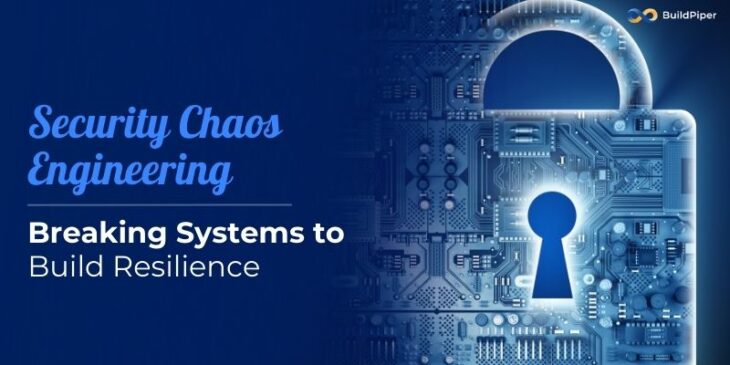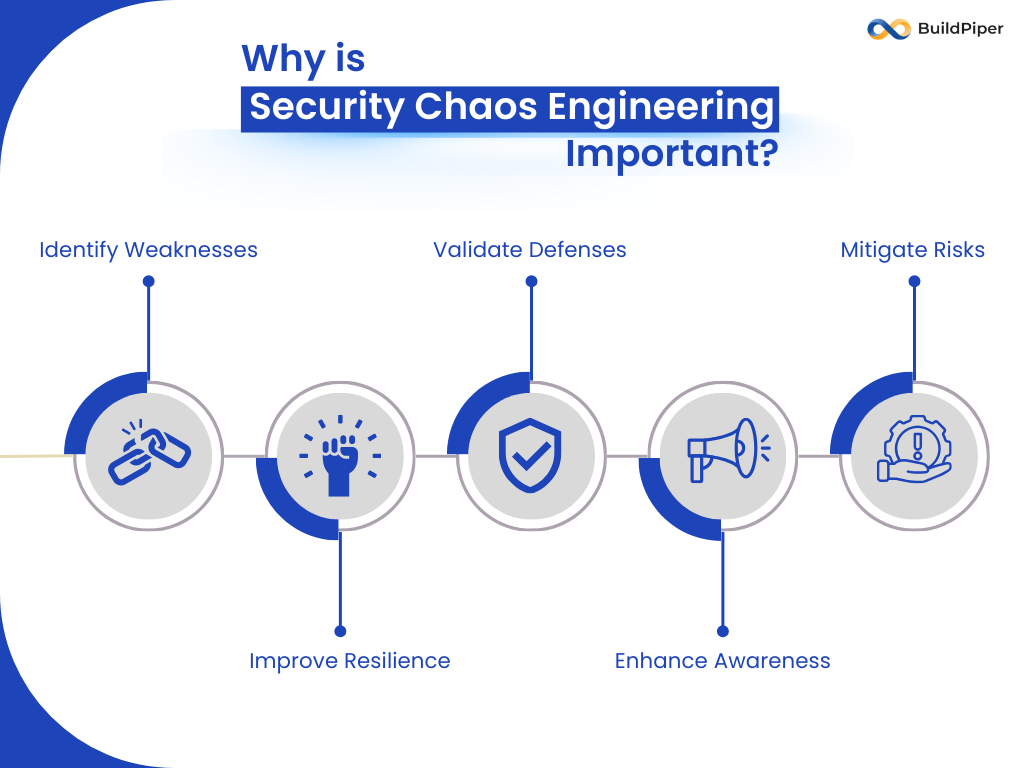
Ensuring the security and resilience of complex systems is a significant challenge for organizations. Traditional approaches to cybersecurity often focus on identifying and patching vulnerabilities. While these methods are essential, they may not address how systems behave under stress or in the face of unexpected attacks.
This is where Security Chaos Engineering (SCE) – a proactive approach that tests system resilience by intentionally introducing chaos to identify weaknesses and improve defenses – comes into play.
What is Security Chaos Engineering?
Security Chaos Engineering is the discipline of experimenting on a system to reveal vulnerabilities and weaknesses in its security posture. It extends the principles of chaos engineering – traditionally used to test system reliability – to the domain of cybersecurity. By deliberately simulating real-world attack scenarios and stress conditions, organizations can assess how their systems react and adapt, ensuring they are prepared for actual threats.
Rather than waiting for attackers to exploit vulnerabilities, SCE encourages organizations to think like adversaries and proactively identify gaps in their security defenses. The goal is not just to fix vulnerabilities but to build a culture of resilience where systems can withstand and recover from attacks effectively.
Why is Security Chaos Engineering Important?
Security Chaos Engineering is crucial because it helps organizations proactively identify and address vulnerabilities in their security systems before they can be exploited by malicious actors. By intentionally causing disruptions or failures in a controlled environment, organizations can:
- Identify Weaknesses: By simulating real-world attack scenarios, Security Chaos Engineering exposes potential vulnerabilities that might not be evident during regular security testing.
- Validate Defenses: It allows organizations to verify the effectiveness of their security controls, such as firewalls, intrusion detection systems, and incident response procedures, under stress conditions.
- Improve Resilience: Through controlled chaos experiments, organizations can strengthen their resilience to cyber-attacks by learning how their systems behave under pressure and improving recovery mechanisms.
- Enhance Awareness: It raises awareness among security teams and stakeholders about potential security gaps and the importance of continuous improvement in cybersecurity practices.
- Mitigate Risks: By proactively identifying and mitigating risks, Security Chaos Engineering reduces the likelihood of successful cyber-attacks and minimizes the impact of security incidents.
Continuous delivery automation with chaos testing plays a critical role in modern cybersecurity strategies. By integrating continuous delivery pipelines with chaos testing, organizations can ensure that new updates or changes are tested under failure conditions. This approach helps identify vulnerabilities early in the development cycle, reducing the likelihood of issues when systems go live.
How It Helps
Security Chaos Engineering (SCE) focuses on enhancing observability and fostering cyber resiliency. Its core objective is to identify “unknown unknowns” within systems, bolstering confidence in their security posture while improving overall observability.
Through SCE, engineering teams gain deeper insights into security concerns in complex infrastructures, platforms, and distributed systems. By uncovering hidden vulnerabilities, addressing traditional blind spots, and preparing for critical edge cases, SCE strengthens the cyber resiliency of the entire product.
This method empowers SREs, DevOps, and DevSecOps engineers to build more robust systems, improve observability, and enhance trust in their security measures.
Must Know – Incorporating fault injection testing for cybersecurity into your organization’s strategy can provide valuable insights into your security defenses, helping you ensure that your systems are truly ready to withstand cyber-attacks.
Chaos Engineering – The Origins
Chaos Engineering is the art and science of deliberately introducing faults and failures into a system to test its resilience. While the term might sound ominous, its origins and purpose are quite the opposite: it aims to build systems that are robust, reliable, and capable of withstanding the unpredictable.
The Netflix Factor
The roots of Chaos Engineering can be traced back to the early 2010s at Netflix, the streaming giant known for its cutting-edge technological practices. As Netflix transitioned from traditional data centers to amazon web services (AWS), they recognized a critical challenge: ensuring that their systems could handle failures without affecting the user experience.
This led to the creation of Chaos Monkey, a tool designed to randomly disable parts of their infrastructure to test the system’s ability to recover. Chaos Monkey became the cornerstone of Netflix’s larger Simian Army suite, a collection of tools that introduced different types of failures, such as latency injection, network disruptions, and regional outages.
Don’t Miss This Blog – Mastering The Art Of Chaos Engineering
Core Principles
The principles of Chaos Engineering were formally codified in the seminal work “Principles of Chaos Engineering,” which highlights key tenets such as:
- Start with a steady state: Define what normal operation looks like.
- Hypothesize about behavior: Predict how the system will respond to failures.
- Introduce controlled chaos: Simulate failures in a safe and controlled manner.
- Measure and learn: Analyze results to identify weaknesses and improve resilience.
Impact on Modern Systems
Today, Chaos Engineering is not limited to Netflix. It has become a critical practice across industries, helping organizations ensure that their systems remain reliable in the face of increasing complexity. Tools like Gremlin, LitmusChaos, and AWS Fault Injection Simulator have made Chaos Engineering accessible to a broader audience.
By embracing chaos, engineers turn uncertainty into opportunity, building systems that are not just functional but truly resilient. The origins of Chaos Engineering remind us that sometimes, the best way to prepare for failure is to embrace it.
Growing Adoption of Chaos Engineering
Netflix’s Simian Army played a pivotal role in bringing chaos engineering into the spotlight, driving its widespread adoption. Today, numerous open-source projects and commercial products make chaos engineering accessible and user-friendly.
Major cloud providers, such as AWS, also offer chaos engineering tools, including AWS Fault Injection Simulator and AWS Resilience Hub. Additionally, the integration of security orchestration tools for chaos testing enhances the ability to simulate real-world cyber threats, further strengthening the resilience of systems in unpredictable conditions.
These tools primarily aim to use chaos engineering to avert availability failures. However, despite its potential advantages, the security sector has yet to fully embrace chaos engineering, even though its principles could offer significant benefits for enhancing cybersecurity.
As organizations continue to realize the value of proactive cybersecurity, many are turning to Managed Security Chaos Engineering services. These services provide a structured, expert-led approach to simulating real-world security threats, helping organizations uncover vulnerabilities before they become a problem.
By utilizing Managed Security Chaos Engineering services, businesses can ensure that their systems are tested thoroughly and consistently, resulting in improved resilience and a more robust security framework.
Frequently Asked Questions
1. What is Security Chaos Engineering (SCE)?
A. Security Chaos Engineering is a proactive approach to improving system security by deliberately introducing failures to identify vulnerabilities and weaknesses in your security posture. It simulates real-world attack scenarios to test how systems react under stress and helps enhance resilience.
2. How does Fault Injection Testing for Cybersecurity help in strengthening security?
A. Fault injection testing for cybersecurity intentionally introduces disruptions or failures into a system to simulate cyber-attack conditions. This method helps to identify vulnerabilities that traditional security testing might miss, pushing the system’s security posture to its limits and ultimately improving its ability to withstand real-world cyber threats.
3. What are the benefits of Managed Security Chaos Engineering services?
A. Managed Security Chaos Engineering services offer expert-led simulations of real-world security threats, helping organizations proactively identify and address vulnerabilities. These services ensure consistent and thorough testing, improving system resilience and creating a more robust security framework, all while reducing the risk of cyber-attacks.
4. How does continuous delivery automation integrate with chaos testing for cybersecurity?
A. Continuous delivery automation with chaos testing ensures that every new update or system change is tested under failure conditions. This integration helps identify vulnerabilities early in the development cycle, reducing the likelihood of issues when the system is deployed live and enhancing the overall security and resilience of the system.
5. What role do security orchestration tools play in chaos testing?
A. Security orchestration tools for chaos testing help simulate complex, real-world attack scenarios. These tools automate the orchestration of chaos experiments, allowing organizations to test how their security measures perform under various threat conditions.





